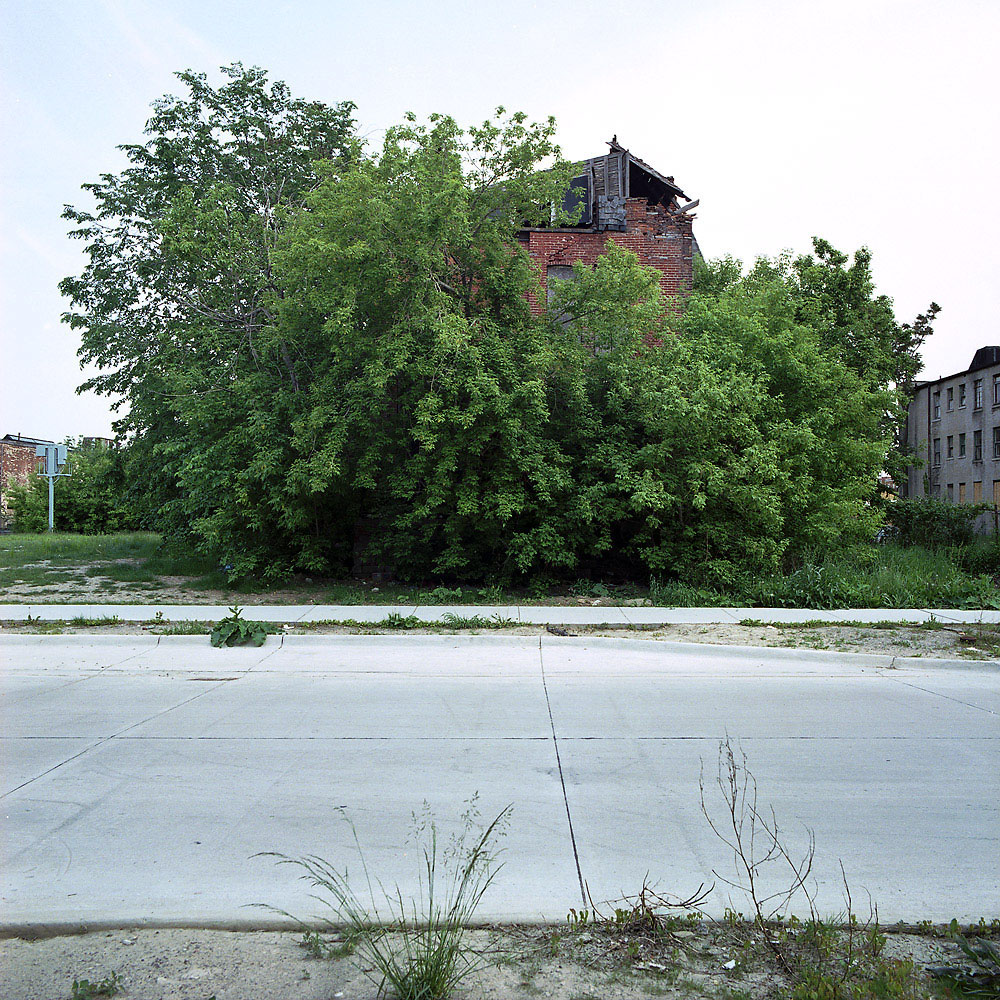On the following page, we take into the research that’s taken place throughout the course of this project. By having meetings with my tutor, Keith James, on a regular basis, I received lots of advice on practitioners and direction for the project. The practitioners involved being ones that have offered inspiration on this subject topic, with my own personal photographs featuring in order to link and compare my work and approach to others. Different practitioners representing approach and styles that influenced the route taken in completing this project. I shall be using the examples and applying at relating them to my work, the similarities and differences etc.
Artist Research
The Wilson Sisters – “Gamma” 1999.
A practitioner recommended from my initial meeting with Clem & Steward was the Wilson sisters. When on the topic of investigating abandoned environments, my tutors instructed me to explore the work of the Wilson sisters. Using Wikipedia as a starting point I was able to discover the style of work these practitioners have completed and found content I could further research into.

 https://en.wikipedia.org/wiki/Jane_and_Louise_Wilson
https://en.wikipedia.org/wiki/Jane_and_Louise_Wilson
From linking the basic information to the content I discovered on the Tate website, I came across a moving image piece created by the Wilson sisters called “Gamma” produced in 1999. After looking into the piece and reading about the location it was shot in, I discovered that the film was shot in old air base and was “companion piece to an earlier work of 1997, Stasi City, which was filmed inside the abandoned headquarters of the German Democratic Republic Intelligence Service.” this, being perfectly in fitting with the style of abandoned locations.
http://www.tate.org.uk/art/artworks/wilson-gamma-t07698
“The multi-screen installation frequently juxtaposes different perspectives of the same architectural space. In a 1999 interview, the Wilsons said: ‘Our primary interest is to emphasize two different viewpoints by simultaneously projecting shots on four screens or from two distinct vantage points. One shot may be very low on the ground and may be a tracking shot, one might be coming on a jib arm from above, so you would get two dramatically different perspectives. It creates an awareness of two different sets of eyes or two different ways of looking.’ (Quoted in Jane and Louise Wilson, 1999, p.15)”
Despite the approach and style being varied to one I intend, the approach of using abandoned environments is one that the Wilson sisters use that I want to incorporate into my work. With all the places I shall visit once being alive communities, they are now either owned by local communities or are located in the middle of acres of fields.
Below, I have included screenshots of examples of this “Gamma” project by the Wilson sisters.
After looking into the Wilson’s series “Gamma”, from the link spoken about, I went to research their other work, for example; “Stasi City”. This being the companion piece to Gamma, both produced in the same style, using abandoned locations to do the filming and take photographs.
 http://zerogravity.empac.rpi.edu/wilson/
http://zerogravity.empac.rpi.edu/wilson/
“Jane and Louise Wilson’s Stasi City is a psychological exploration of the mute, abandoned architectural spaces of the Stasi, the former headquarters of the East German secret police. For five minutes, a video camera slowly and deliberately pans through the building’s hallways and interrogation rooms, invoking the long history of abuses that took place there, as a human figure floats gently upwards unpinned from the laws of gravity. The four channel video installation is shown on opposite corners of the enclosed installation space, reinforcing a sense of confinement and surveillance.”
All these practitioners were the first one’s researched, I don’t want to link any of my work to it, this being for a couple of reasons. Firstly, the research completed was whilst debating about appraoches using abandoned places, this being why this piece features. In addition to this, the fact that this piece is moving image. I want my documentary piece to be photography based as I personally believe that it enables me to tell the story to a stronger standard through the images in my final series. Although I may not be able to relate any practical work to the Wilson sisters, I certainally have taken ideas of how to use an abandoned place to create something like “Gamma”.
Robert Polidori – Chernobyl. – http://www.robertpolidori.com
“Zones of Exclusion” documents the uninhabitable environment in Ukraine in 1984. Hence why the name Chernobyl features in this workings, “the Chernobyl nuclear disaster of 1984”. This series presents the terrible state that this part of the world was left in after this nuclear disaster, with the photographs presenting the terrible way that this part of the world was left. In addition to gaining basic information about this practitioner from Wikipedia, I have attached photographs of his website and a photograph from the photography series I’m discussing. Despite the fact that my series of photographs won’t take place inside of a building, the whole idea and approach of abandoned environments is still there, with the audience’s interpretation being a key part of the process of this photographic style. Despite the colors being slightly different, the photograph I have added on the end of Robert Polidori’s work, I believe is a slightly tidier version of his messy series. With this practitioners series covering a nuclear disaster, it’s obviously going to look a bit different to my series on abandoned settlements, however I do believe that the link is there, with the derilict building on the left side of my photograph infitting with the abandoned disaster side of Polidori’s.
John Kippin – Landscape. http://johnkippin.com/archive/coast.php
Taken from John Kippin’s series “Coast”, this is example of the style of presentation discussed in a meeting with my tutor. The idea of including a single word in the photograph contributes to the power of the image. This approach, was one considered when thinking about the presentation of my final series, with the single word in the photograph replacing the supporting side document. Experimenting around with words like “Dead” “Shrunk” “Lost” and “Hope” before I decided that I wanted my work to have the side part, I feel although there is a certain importance about the side document as it brings the piece together and shows the audience a small history of the place to support the main photograph. John Kippin’s work is also very dark and gloomy, I have put my own photograph to the side of this practitioners work, as I feel out of all my iamges and locations I visited, this one would be the most appropiate in incorporating together, the slighty spooky look about the image seems to be infitting with Kippin’s.
Paul Hill – Derby Landscape. http://www.hillonphotography.co.uk/projects.php
Taken from Paul Hill’s series called “Landscapes”, after viewing the entire sequence I felt these two examples were the most appropiate to incorporate into my workings. I was advicede to research the work of Paul Hill on the bais of this series, with the project I want to produce being also based around landscapes. Similar to the work of John Kippin, I across this work off Paul Hill, at this point all of these artists came together and began to work on a research level for me, being able to relate my photographs to those of famous practitioners, it shows the influence they have had on me and how I want my work to look like theirs, the spooky style of presentation in black and white in something I considered however, I decided that I wanted to keep the colour in the photograph as I feel it is a link throughout my series.
Tarquin Blake – Abandoned. Ireland Houses. – Book “Abandoned Mansions of Ireland” https://www.amazon.co.uk/Abandoned-Mansions-Ireland-Tarquin-Blake/dp/1848890613
When in discussion with my other tutor about this abandoned settlements project, I got a really good source from her. Been Irish, my tutor recommened looking into the abonded houses in Ireland and the fast increase and deractic decline the property market took back in 2011. “People were building houses everywhere because everyone had so much money”.
From reading into this, I discovered a newspaper article – http://www.dailymail.co.uk/news/article-2033521/The-hangover-Irelands-property-boom-Abandoned-ghost-estates-lifeless-houses-stripped-worth.html – “The hangover of Ireland’s property boom: Abandoned ghost estates and lifeless houses stripped of their worth” These ghost estates are what Michelle was referring to.

This picture being an example, the currency increased so much that people thought they had so much money, resulting it people building housees everywhere. When the currency dropped again, Ireland was left with masses and masses of unfinished and uninhabited houses.
When disucssing the idea of Ireland, Simon Marsden’s – “the once great houses of Ireland”
Simon Marsden. – Simon Marsden – Sinister Villages & Decaying Cottages. – http://www.marsdenarchive.com/library/images.php?cat=00000022&pg=1
Website gives you the ability to select a variety of categories of the practitioners work, showing the sheer volume of environments of ruins Simon Marsden has explored and exhibited.
With categories varying from Crumbling Castles to Haunted Houses, it’s clear that Simon Marsden is an excellent example and starting point for my second research.Recommended by Keith, Marsden was a landscape photographer who explored the abandoned ruins around Europe
Recommended by Keith, Marsden was a landscape photographer who explored the abandoned ruins around Europe

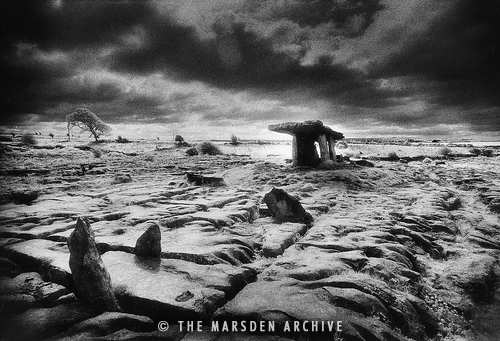 – http://imgc.allpostersimages.com/images/P-473-488-90/26/2675/9AEUD00Z/posters/simon-marsden-killua-castle-county-westmeath-ireland.jpg http://www.marsdenarchive.com/getpreview/00000333/MA-IR-463.jpg
– http://imgc.allpostersimages.com/images/P-473-488-90/26/2675/9AEUD00Z/posters/simon-marsden-killua-castle-county-westmeath-ireland.jpg http://www.marsdenarchive.com/getpreview/00000333/MA-IR-463.jpg
This photograph is my personal favorite of Simon Marsden’s collection, from his Ireland houses series this relates from the previous book and articles studied about Ireland. The thing I really enjoy about this photograph is the sky, with the moody and slightly spooky outlook it gives to the viewer, I believe that when viewing my own work, it’s clear that Simon Marsden skies were something I considered when taking my pictures, in addition to this, the composition. I believe I have focused strongly on the composition for my series, this being due to research this body of work early, taking images and following Marsden’s approach to taking pictures.
Read more: http://www.dailymail.co.uk/news/article-2033521/The-hangover-Irelands-property-boom-Abandoned-ghost-estates-lifeless-houses-stripped-worth.html#ixzz4gTgmU8Y5
Follow us: @MailOnline on Twitter | DailyMail on Facebook
“Camera Techniques in Archaeology” is a book by V. M. Conlon that I came across when in the research stage of this project.
Throughout this book, Conlon discusses the link between landscape photography and archeology. I believe that this book was relevant to my research and it gave ideas and contributed towards thinking about my approach for taking and displaying my final images.

William Henry Fox Talbot
When going to a tutorial with Keith after visiting another location called Goltho, we went over my photographs, discussing the positives and negatives, with Keith giving advice about how to combine the style of these photographs to a practitioner in the industry.
William Henry Fox Talbot – First Photograph – Door Open. Recommended by my tutor after viewing the composition of my image, the photograph famously known as the “first photograph” by William Henry Fox Talbot.

From conducting research into William Henry Fox Talbot’s time, it becomes clear how important this individual has been to the subject of photography. I found an online article that enabled me to read into more detail the life of this practitioner and what he achieved throughout his time.
http://www.bbc.co.uk/history/historic_figures/fox_talbot_william_henry.shtml & http://www.metmuseum.org/toah/images/hb/hb_2005.100.498.jpg – With this article filling in the reader’s knowledge of this practitioner, when reading it soon becomes clear just how instrumental this individual was to the art that is photography.
“Fox Talbot went on to develop the three primary elements of photography: developing, fixing, and printing. Although simply exposing photographic paper to the light produced an image, it required extremely long exposure times. By accident, he discovered that there was an image after a very short exposure. Although he could not see it, he found he could chemically develop it into a useful negative. The image on this negative was then fixed with a chemical solution. This removed the light-sensitive silver and enabled the picture to be viewed in bright light. With the negative image, Fox Talbot realized he could repeat the process of printing from the negative. Consequently, his process could make any number of positive prints, unlike the Daguerreotypes. He called this the ‘calotype’ and patented the process in 1841. The following year was rewarded with a medal from the Royal Society for his work.”


“Goltho”, the location visited is a hamlet in the West Lindsey, Lincolnshire. Part of my dead villages project, Golho represents a shrunken and dead settlement, this meaning that the environment that once existed, has gone and with only a few piece of evidence showing the remains of the settlement.The two photographs above represents the link that my image has to William Henry Fox Talbot’s photograph, with the open door linking to the gate in my picture.
The photograph of mine is one that needs editing in order to sort out the green so it’s consistent throughout the series. After getting these photographs printed and taking them to a meeting with Keith, we lay down the a1 images next to each other and assessed the situation. With the moodiness of the skies being a common link throughout the sequence, it was also vital to match the green that feature throughout, this is presented later on in the work where the images are edited and prepared for the final series. The link between these photographs is visually clear, this being evidence of the effective style this approach to an image has, inviting the viewer in.
The link between these photographs is visually clear, this being evidence of the effective style this approach to an image has, inviting the viewer in. An approach taken to produce the first photograph in 1800’s, that people still continued to use today in 2017. When comparing the photographs in terms of quality and size, you can see how the technological advancements have altered the path photograph has taken, with colour being introduced as well as images getting bigger and being easier to take.
Kevin Bauman – http://www.kevinbauman.com
I wanted to include this particular picture in order to compare it with the photographs taken of Osgodby, when putting the two next to one another, you can really see the inspiration I took when photographing this location. The whole messy outlook is carried throughout, when glancing at both pictures you get the approach used by Kevin Bauman and the inspiration I’ve taken.
Thomas Struth – Unconscious Places 1. http://www.thomasstruth32.com/smallsize/photographs/unconscious_places_1/index.html
The title for this practitioners work alone gripped me into research his work. As I spoke about before, the idea of unconscious in the title was something I really considered to put as the title of my project.
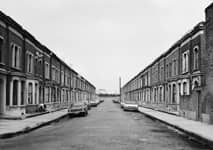
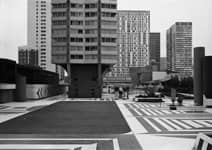
 http://www.thomasstruth32.com/smallsize/photographs/unconscious_places_1/index.html
http://www.thomasstruth32.com/smallsize/photographs/unconscious_places_1/index.html
This German practitioners project focuses on “unconscious places”, with the series taking place all over the world. With one of these pictures taken in London and the other Paris. In addition to the title of the project, I like the simplicity of the photographs and believe that from researching this practitioners series, it influenced me to keep my work simple. Thomas Struth, therefore, is an excellent example of the work that influenced my project, with the title and the simplicity of the images inspiring me to make my series to a similar style. Like some of the other practitioners I’ve researched, Struth’s work is older, with this series being taken around the 1970-1980’s. With the option of colour or black and white not being a choice for some of these practitioners, it makes one wonder how the images would look in this day and age, or further more, with the world being such a busy place, would practitioners have the opportunity to produce such photographs? I I have associated my photograph with the work of this practitioners as I feel the simplistic look so my images can be combined with the outlook of this photographers. I felt it appropiate to include more of this particular practitioners work than others, this being from the massive influence I gained from researching this piece.
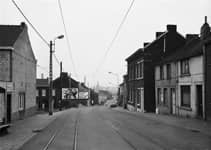
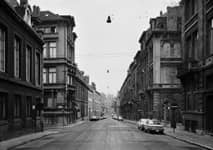
Bernard & Hilla Becher.
Using Wikipedia as a starting point for this research, I gather information of this pair before digging deeper to find further content and series.
From here, I then went on to find the content of these practitioners on teh Tate website.
All this contributing to the overall purpose of my work. The purpose of exploring dead villages, this being an example of a practitioner my tutor thought it may be interesting to research to contribute to my project. I came across this newspaper article online, where it shows the unique photography style Bernd and Hilla Becher when photographing architecture. Despite the fact that architecture doesn’t feature in my work, the amount of content I have found on it that is relevant really backs up my work and shows the research jounrey I’ve been on. With even the single example of work below showing the different in intention in terms of projects, however, it’s relable through archeology mean. It also links nicely to the book I looked at by V. M. Conlon, who actually investigates the camera techniques in archaeology.
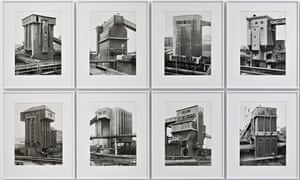
For over 40 years, Bernd and Hilla Becher photographed the architecture of industrialisation: water towers, coal bunkers, blast furnaces, gas tanks and factory facades. They did so in an obsessively formalist way that defined a style, and made them one of the most dominant influences in contemporary European photography and art. – https://www.theguardian.com/artanddesign/2014/sep/03/bernd-and-hilla-becher-cataloguing-the-ominous-sculptural-forms-of-industrial-architecture.
As a fair few of my researched practitioners are from an older generation, I decided I wanted to research on social media in addition, this being the result when searching up the word “Abandoned” as you can see the masses of variety, showing how everyone in the world interprets the subject, with everyone having such easy access, it offers new opportunities for people worldwide, having the ability to share work at the click of a button. Similar to Instagram, throughout this project I have been using Tumblr to show Keith my photographs and getting feedback.
Throughout my weekly meetings with my tutor, I was presenting my work and then going into discussion about possible practitioners to research in order to develop my project. After emailing Professor Lewis about discussing subjects of my photography topic, I want to dig further and started looking into case studies. The idea of digging into the past with a camera is one that, since completing this project, has gripped me and left me wanting to learn more. In the following couple of case studies, we go into detail about relating the idea of archeology and photography. The video that I shared of Lewis’ on my other page is one that also contributes towards this, how archaeology is important to all lives and like photography, because of technology is becoming increasingly popular.
Case Study
www.castleparkstories.org/digging-into-the-past/
http://www.scottishheritagehub.com/content/52-aerial-reconnaissance-and-photographs
“Aerial photographs are raw material for archaeologist: they contain information and this requires interpretation and mapping. These processes are vital to creating reliable archaeological information that can facilitate the understanding and management of heritage assets. Exploration of prehistoric lowland settlement patterns, in East Lothian for example, requires accurate mapping to create robust settlement morphologies that can be analysed systematically. Here, over 40 years of sustained aerial survey, the results of which have now been systematically mapped, underpin the understanding of regional settlement patterns and contribute to the creation of settlement frameworks.” Quotes lik this one, taken from the website above, show the importance that each subject has to another and by work together the world of technology in archaeology and indeed photography will take huge steps forward in the coming decades.
In a time where technology is taking over the world we live in, something like storing away archives to do with these settlements becomes a difficult task for people to now complete.
- digging into the past with a camera
- landscape theory
- re-enforce approach, critical reading.
- Industrial decline in Europe – photographing things before they go, why?
- Digital altering – how we view landscape photography.
- Lost City in Scotland
- Airial views of villages – plain images.
I believe that throughout this research page, I have called upon various different practitioners and their work that all relate to the project I am completing. By bringing together landscape and abandoned photographers, it enables me to view all kind of examples of the work I want to complete. In addition, even by researching the first photograph taken and linking it to my work, this portray that that style of photography has come so far and is still used in this day and age.
As discussed in my meetings, the research side of this project would be interesting as I wasn’t going to find a practitioner who has completed a series like mine before, finding both landscape and abandoned photographers that work as inspiration. A key inspiration for this project was my tutor Keith, who after recommending to visit Gainsthorpe was always clear and giving good advice and suggestions during meetings. “what if it’s just a few bumps in the ground?” was the question Keith asked proir to my first visit, a question has lead into my interest in this subject topic. With every little bump in the ground and the various remains of different settlements all telling different stories, the final series I feel represents the journey taken and the inspiration gained about the colour, the title, the conposition, the size and the final presentation.












